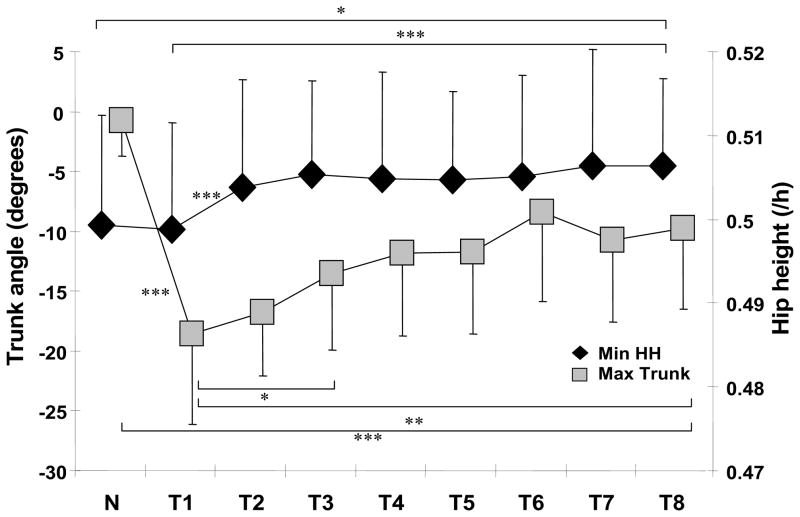Figure 6.
Shown are group means (±SD) of adaptive changes in the post-trip a) trunk angle and b) hip height for the regular walking trial (N) prior to the first trip and all 8 trips (T1-T8). The maximum trunk flexion and minimum hip height during recovery (from the obstacle-hit to the recovery-foot-touchdown) were obtained. Trunk angle was defined as the angle between the trunk segment and the vertical axis (+: extension; −: flexion). Hip height was calculated as the vertical distance from the ground to the midpoint of the hips and normalized by subjects’ height (/h). * p < 0.05; ** p < 0.01; *** p < 0.001.

